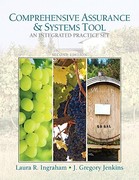Question
Part -A On March 1 2012 Philip inherited a property in inner Sydney at 151 Temple Street from his Aunt. The property had been used
Part -A
On March 1 2012 Philip inherited a property in inner Sydney at 151 Temple Street from his Aunt. The property had been used for commercial purposes but as the area was central to his job as an interior designer he decided to move in immediately and renovate to convert to residential accommodation. The property was valued by the Aunt's deceased estate at $370,000. Philip borrowed $100,000 on 1 April 2012 at fixed interest of 5.5% per annum payable over twenty years to finance the renovation.
In September 2014 Philip married Kim, a plumber, and they resided in the now completely renovated property, paying out the loan early on 1 April 2016. On 1 July 2017 they purchased jointly an adjacent property, 153-155 Temple Street, for $850,000, which was significantly larger with the view to develop it into two residential properties. They purchased this property using savings of $30,000 and a loan of $960,000 (legal and other costs to purchase were $40,000 and the balance was borrowed to finance the first stage of the renovation) and using the equity in the renovated property at 151 Temple Street which was valued to obtain the loan at $800,000, as further collateral. They again opted for a fixed interest rate, 4.7% per annum with the loan maturing in 30 years. They continued to live in the original property until they had completed the first phase of the renovation at 153 Temple on 1 August 2019. The renovation had come in on budget at a cost of $100,000. They were so pleased with the renovation and the larger residence it offered they decided to move from the original property on 1 August 2019 and rented 151 Temple for $759 per week to a cousin from 7 August 2019. The rental payment was approximately 10% below market in exchange for the cousin providing labour for the renovation of the remaining property.
Despite the rental income they are concerned that the next phase of the renovation is taking too long and are considering selling a property to raise funds quickly to complete the work. A local real estate agent has indicated 151 Temple St could be sold for $1 million and the more recently renovated 153 Temple St would sell for $1.3 million.
Part-B
Philip and Kim finally decided not to sell either 151 or 153 Temple Street. They continued to reside in 153 and rent 151 to the cousin. They borrowed additional funds and employed a builder to complete the renovation at 155 Temple Street. The property was sold on 1 June 2020 and the gain on sale was $150,000.
Philip earned a salary of $98,000 (tax withheld under pay as you go was $25,792) and had job related expenses of $7,800 including $600 for flights and $1,000 for hotel accommodation to attend a conference in Port Douglas in November 2019. Philip's employer paid for the conference registration which included all meals and the cost of travel between home and airport, airport and hotel accommodation. The conference was for 5 days, Monday to Friday but the accommodation included an additional 4 days for the weekend before and the weekend after the conference. Philip flew to Port Douglas on the Saturday morning and flew back to Sydney late on the Sunday after the conference.
Kim subcontracted plumbing services to a five builders over the year and earned a total of $112,000 with tax withheld under voluntary agreements of $22,400. Business deductions were $17,500. Kim's plumbing van travelled 4,900 km, all business and expenses were $2,100 for registration and insurance, $900, for fuel, $670 for parking fines. Kim joined Philip in Port Douglas for the Interior Design Conference from Tuesday to Sunday.
Both Philip and Kim have private health insurance, they have no dependents.
Required
AdvisePhilip and Kim of their tax obligations including an estimate of any tax payable or refund entitlement.
Your response will have two parts,
- a report itemising amounts to be included and deducted stating relevant legislation and case law (refer to ILAC style for discussion of any contentious matters) and a calculation of tax payable including any refund if applicable, which will form client working papers (15 Marks), and
- a draft letter to Philip and Kim summarising their tax position (5 Marks).
Both parts can be submitted in a single file. Ensure all calculations are clearly detailed (Total of 20 marks for Part B).
Step by Step Solution
There are 3 Steps involved in it
Step: 1

Get Instant Access to Expert-Tailored Solutions
See step-by-step solutions with expert insights and AI powered tools for academic success
Step: 2

Step: 3

Ace Your Homework with AI
Get the answers you need in no time with our AI-driven, step-by-step assistance
Get Started


